City Breaks in France: Lille
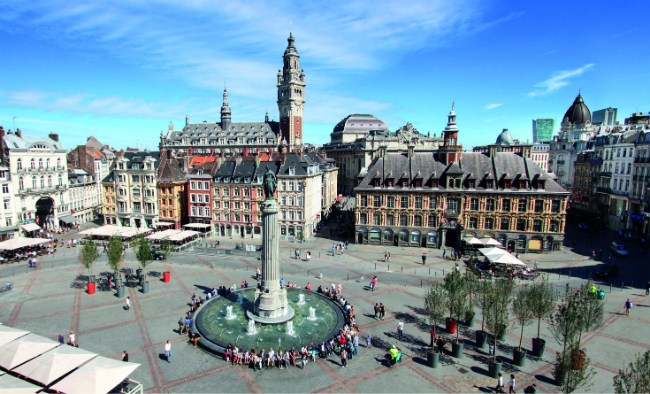
Lille, in many ways, is reminiscent of Paris. Yet, unsurprisingly, given its location in the far north of France, it has a good dash of Flemish influence. Some of its distinctive architecture is really quite stunning – the neo-Flemish Chamber of Commerce, neo-classical Opéra and gothic-style Église Saint-Maurice are among the many great buildings here that should be visited; each offering a different perspective on the long and varied history of this remarkable city of contrasts. Lille continues to embrace cultural diversity with gusto and supports a vibrant arts scene. And, with more than 4,000 shops within its boundaries, it’s also a great place for some retail action. It has furthermore, quietly but quite deservedly, become one of the most influential gastronomic destinations in France.
Lille was awarded the title of European Capital of Culture in 2004 and took to the role with enthusiasm. Literally thousands of events were held over the course of the year, both in the city and in its environs, and visitor numbers went up by nearly a third. The success of 2004 gave rise to Lille3000, an on-going project whose name came from a desire to continue the promotion of arts and culture in the city, not just for 2004 but right up until the year 3000! Every three years, the districts of Lille stage an art festival like no other, in streets, museums and public buildings. An extraordinary carnival-style parade in 2015 saw 300,000 visitors celebrate the opening night and featured thousands of Lillois as performers, plus international artists and even dancers and giant sculptures from the famous Rio Carnival.
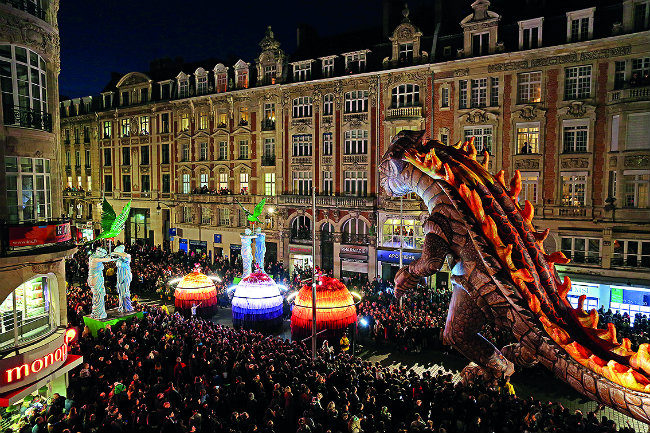
Lille3000 opening parade. Photo: Maxime Dufour Photographies
There are several must-see museums and art galleries in Lille. Certainly not to be missed is the Palais des Beaux-Arts, the second largest general-interest museum in France – only the Louvre’s collection is bigger. The museum houses prestigious European paintings by luminaries such as Monet, Picasso, Rubens, Goya, Van Dyck and Delacroix, plus a diverse collection of drawings, sculptures, ceramics and some rare, enormous, 18th-century relief maps used by French kings to plan battles.
In the heart of the Old City, the Musée de l’Hospice Comtesse – a former hospice founded by Joan of Constantinople, Countess of Flanders, in the 13th century – offers a glimpse of the past with its exhibition of the city’s history. And jumping back into the modern day, Tripostal, a former mail sorting office turned arts centre, hosts temporary modern art exhibitions and events.
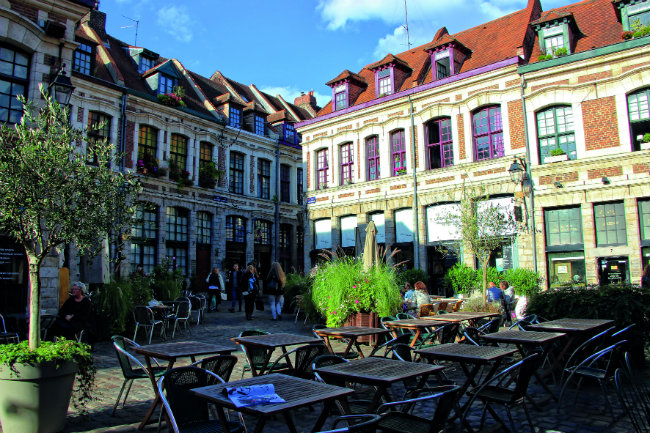
The Place des Oignons in Lille. Photo: Janine Marsh
À LA FLÂNERIE
The French have a word for just strolling and enjoying the sights and the ambience of a place: la flânerie, which loosely translates as ‘the art of wandering about’, and Lille is the perfect place to practise this most noble art. Though there’s a great public transport system in the city, with métro, tram and bus services, le Vieux-Lille, the picturesque old town, is best visited on foot. Begin your flânerie at the Grand Place, watched over by the ‘Goddess’, as the locals call the statue on top of the column that commemorates the Siege of Lille in 1792. (They also say she’s the ugliest lady in Lille, but never to her face.)
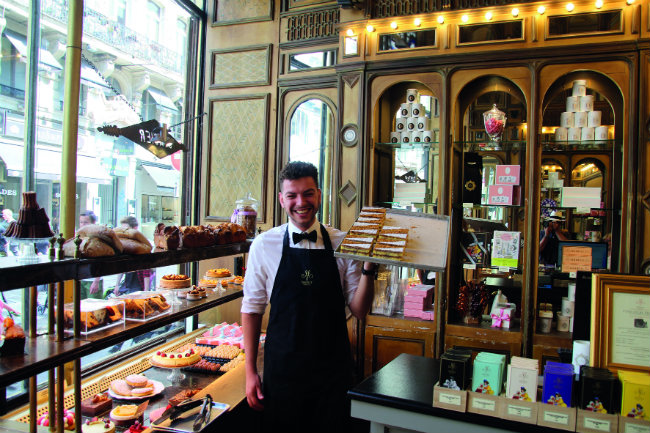
Inside the Meert boutique. Photo: Janine Marsh
Do take a coffee break at a terraced café in this huge square, then visit the tourist office just around the corner for a map and up-to-date information of what’s on. Then head back north to wander round the wiggly, winding streets, picturesque squares, and cobble-stoned rues, enjoying the historic buildings, canals, parks, and the pretty place aux Oignons with its arty shops, cafés and wine bars. Then, if you’re not scared of heights, wander down to l’Hôtel de Ville in the city centre and climb the 104-metre, UNESCO-listed Beffroi de Lille for fabulous views over the city centre. Inaugurated in 1932, this is the tallest civic belfry in Europe.
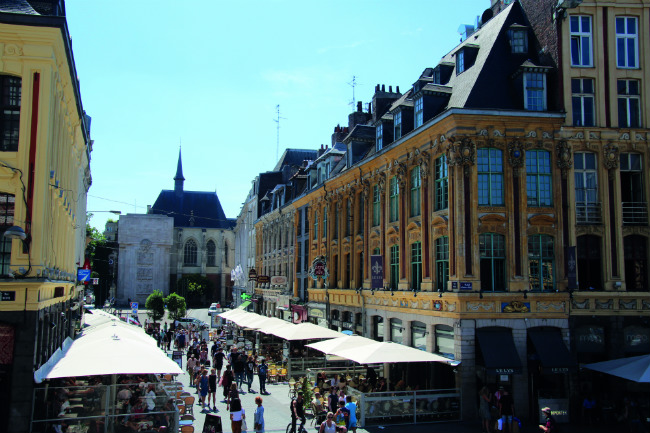
The city of Lille. Photo: Janine Marsh
All that walking, and climbing, is bound to work up an appetite. Thanks to a willingness to embrace innovative cuisine, a proliferation of young, inventive chefs, and an enduring love for its heritage dishes, Lille’s restaurants are exciting, dynamic, and often very good. Enjoy the local cuisine with robust dishes such as carbonade flamande – a beef stew made with beer and brown sugar; potjevleesch (Flemish for potted meat) a dish of three cold meats – traditionally rabbit, chicken and veal – in aspic; and waterzooi – which really just translates as ‘boiled water’ but is actually much more interesting than that; it can be made with fish or, more commonly, chicken. There are hundreds of restaurants to try, from estaminets like local legend Barbue d’Anvers to Michelin-starred La Table at the Clarence Hotel. Or you could cook your own dish at L’Atelier des Chefs with a lesson from a master chef. There are hundreds of bars to enjoy too, from the fun and hip JaJa, perfect for apéritifs; cocktails bars like Coke (named after the mining company in whose former offi ces this restaurant and bar now reside); and a champagne bar at the Hôtel Le Couvent des Minimes, a converted 17th-century convent. And don’t forget that this is beer country – we are, after all, just a few miles from the Belgian border. Local favourite La Capsule has an excellent choice of beers, and the staff are happy to advise you on which you should try.
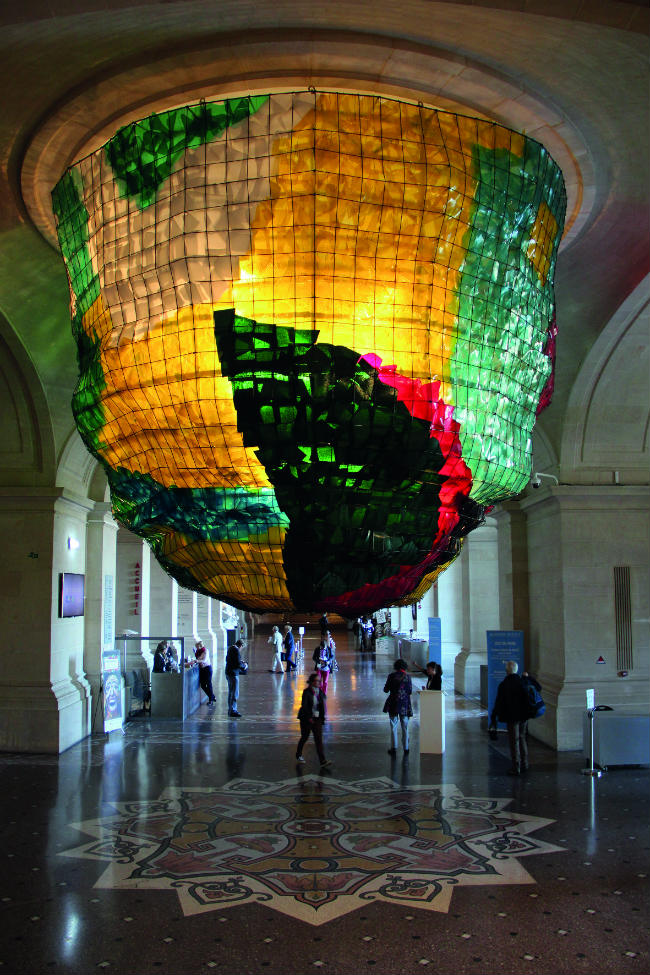
The entrance to the Palais des Beaux Arts in Lille. Photo: Janine Marsh
MARKET DAY
Wazemmes market (Tuesday, Thursday and Sunday mornings) is one of the largest street markets in France. Vibrant and colourful, you’ll hear music too – and the locals are apt to dance. While you’re here, nip into pâtisserie Aux Merveilleux de Fred. You can’t miss the queues; the locals adore the gourmet meringue pastries, whose fame has spread around the world. Browse, too, at the second-hand book market (Tuesday to Sunday afternoons) in the Vieille Bourse, Lille’s old stock exchange. The Renaissance frescoes make for a beautiful backdrop to the colourful book booths. On Sunday nights, in summer, the courtyard is the setting for tango dancing under the stars. Every first weekend in September the city holds its famous flea market, the Braderie de Lille, the biggest in Europe, with around 10,000 sellers – and many more buyers.
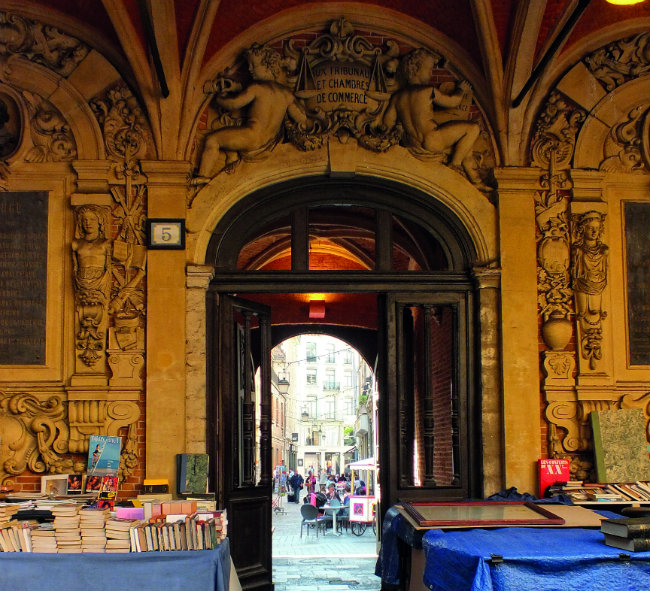
Second-hand book market at the Vielle Bourse in Lille. Photo: Janine Marsh
For more conventional shopping, from fashion to kitchenware, interior design to gourmet food products, Lille is an exceptional place to go. You’ll find all the best of French high-street brands here, grand names like Hermès and Louis Vuitton, as well as one-off boutiques unique to the city where you can buy something gorgeous that you know no one else will have.
If you want to take home a taste of Lille – and if you have travelled from London by train you can take home as much as you can carry – there are gourmet food shops galore in the old city. Outstanding among them is Maison Méert, which has been delighting customers since 1761. Pop in here to buy cakes, chocolate, and the famous sweet, flat waffles of the region. Supposedly invented for King Leopold I of Belgium, they are also said to have been loved by General de Gaulle and Buffalo Bill! For fromage, Philippe Olivier is a legendary affineur known throughout France, and his is the place to go for the best cheese in town.
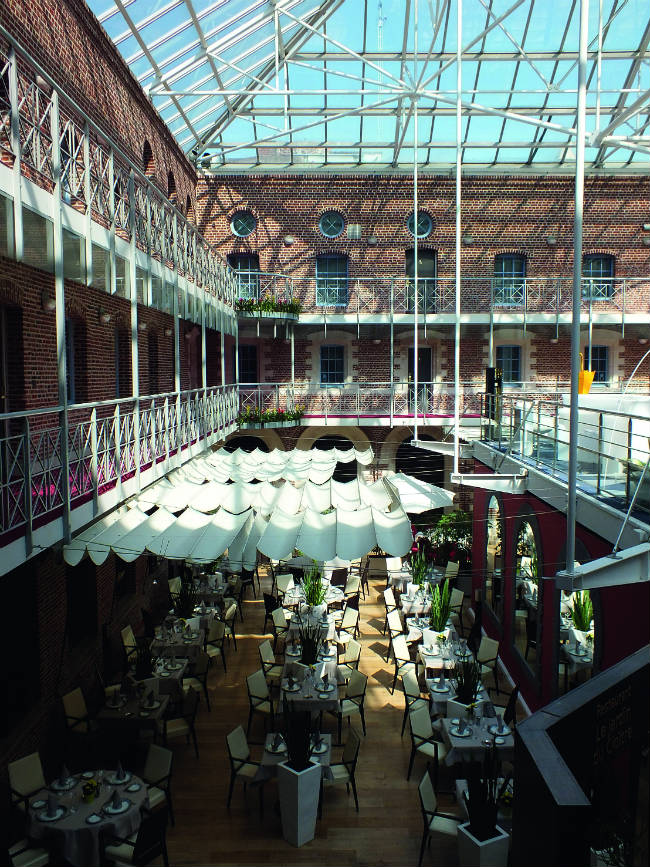
The Couvent des Minimes. Photo: Janine Marsh
SIDE BAR: 5 MUST-SEE MUSEUMS IN AND AROUND LILLE
LILLE MÉTROPOLE MUSEUM OF MODERN, CONTEMPORARY AND OUTSIDER ART, VILLENEUVE-D’ASCQ: Home to thousands of artworks, including Picasso, Miró and Modigliani, plus the biggest ‘outsider art’ (art in its raw form, outside normal cultural influences) collection in France. www.musee-lam.fr
LA PISCINE MUSEUM OF ART AND INDUSTRY, ROUBAIX: An art-deco municipal swimming pool turned art gallery dazzlingly converted by Jean-Paul Philippon. He kept original features, including the pool, though he narrowed it and used the space to showcase a fabulous collection of 19th- and 20th-century art. www.roubaix-lapiscine.com
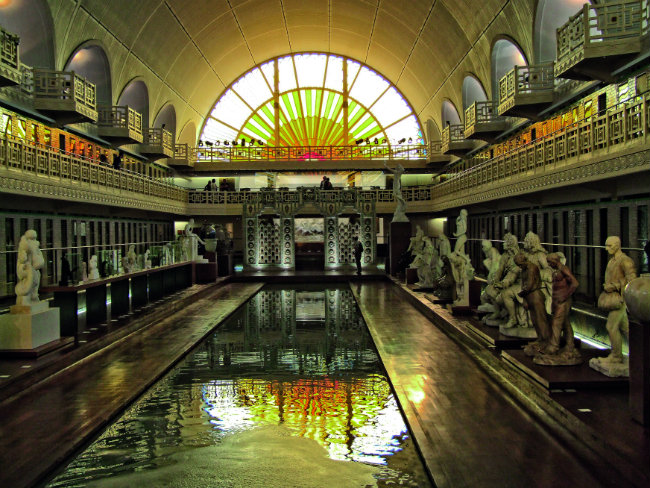
La Piscine Roubaix. Photo: Lille Metropole
VILLA CAVROIS, CROIX: Designed by architect Robert Mallet-Stevens, this flawless time-capsule art-deco mansion is magnificent. Restored to glorious perfection by the Centre des Monuments Nationaux, its glamorous rooms and garden are a masterclass in simplicity and complex design at the same time. www.villa-cavrois.fr
MUSÉE DE PLEIN AIR, VILLENEUVE-D’ASCQ: An open-air museum with a recreated village of 17th- to 19th- century buildings occupied by artisans, this is a fun place to visit. www.enlm.fr
LOUVRE, LENS: Just outside Lille’s metropolitan boundary, but so special we had to include it, is a branch of the famous Louvre museum. A brand new gallery and extraordinary collection is showcased in such a way that you can get up close and view it from all angles. www.louvrelens.fr
Buy a money-saving Lille City Pass, which gives you free access to 28 attractions, including the first four above, free use of public transport and discounts in dozens of restaurants and shops.
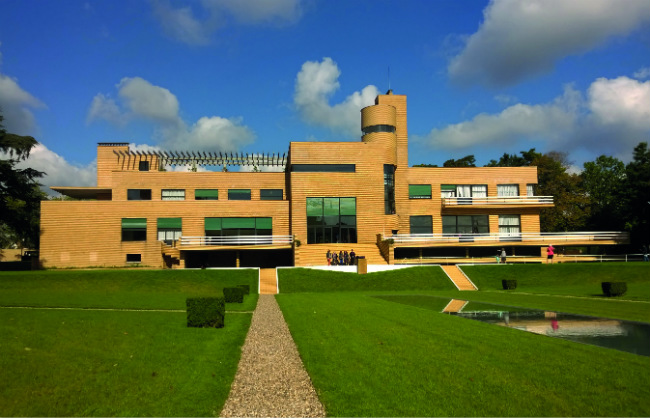
The Villa Cavrois
LILLE ESSENTIALS
GETTING THERE AND GETTING AROUND BY TRAIN: Lille can be reached in just 1hr 22mins by Eurostar from St Pancras, London.
BY CAR: It’s about 1hr 15mins from Calais to Lille; from Dunkirk about an hour. Lille has ample on-street parking as well as several Metro car parks.
BY BICYCLE: Lille is a cyclist’s dream with cycle-friendly lanes and courteous drivers.
TOURIST INFORMATION: www.lilletourism.com
From France Today magazine
Share to: Facebook Twitter LinkedIn Email
By Janine Marsh
Leave a reply
Your email address will not be published. Required fields are marked *



